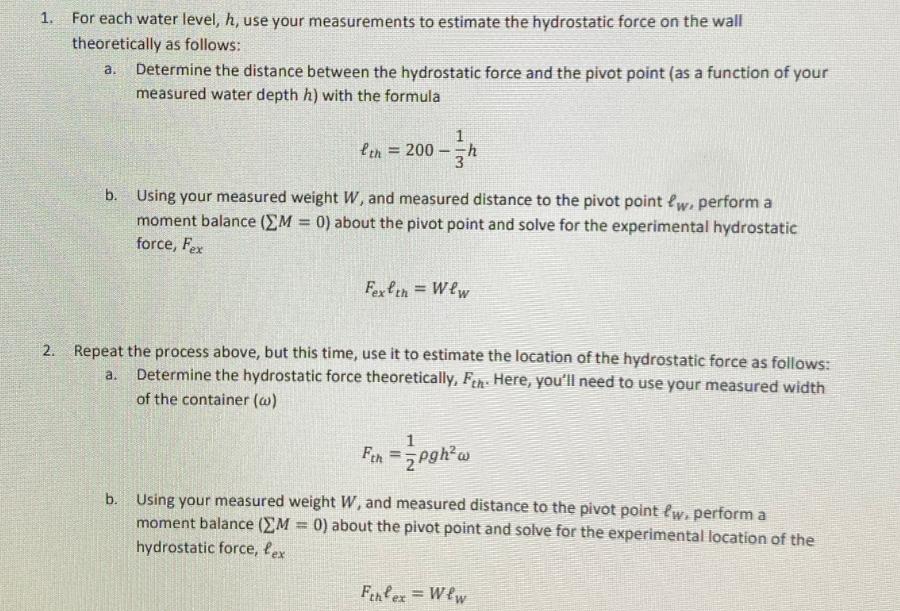Answered step by step
Verified Expert Solution
Question
1 Approved Answer
1. For each water level, h, use your measurements to estimate the hydrostatic force on the wall theoretically as follows: a. Determine the distance

1. For each water level, h, use your measurements to estimate the hydrostatic force on the wall theoretically as follows: a. Determine the distance between the hydrostatic force and the pivot point (as a function of your measured water depth h) with the formula 1 th=200- - =h W b. Using your measured weight W, and measured distance to the pivot point fw, perform a moment balance (M = 0) about the pivot point and solve for the experimental hydrostatic force, Fex Fexfth = Wew a. 2. Repeat the process above, but this time, use it to estimate the location of the hydrostatic force as follows: Determine the hydrostatic force theoretically, Ft. Here, you'll need to use your measured width of the container (w) b. 1 Fth = pghw Using your measured weight W, and measured distance to the pivot point fw, perform a moment balance (M = 0) about the pivot point and solve for the experimental location of the hydrostatic force, lex Fehlex = Wew ==
Step by Step Solution
There are 3 Steps involved in it
Step: 1

Get Instant Access to Expert-Tailored Solutions
See step-by-step solutions with expert insights and AI powered tools for academic success
Step: 2

Step: 3

Ace Your Homework with AI
Get the answers you need in no time with our AI-driven, step-by-step assistance
Get Started


